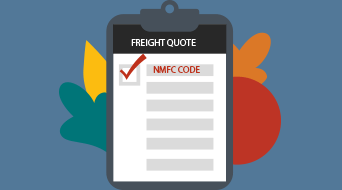Freight Shipping Guide 101: Everything You Need to Know (And More)
Do you have a question about freight shipping? Well, you have come to the right place. Freight shipping can be a complex endeavor. After all, you are moving large shipments from one place to the other — sometimes across the country and sometimes across the ocean.
Never fear! Unishippers is here with the Ultimate Guide To Freight Shipping. We’ll tell you everything you need to know — along with some stuff you don’t — about freight shipping. We give a step-by-step guide, discuss mode types, provide strategies for growth and so much more. Let’s get started!
What is freight shipping?
Freight shipping refers to the transportation of goods in bulk or large quantities from one location to another. It involves the movement of cargo by various modes of transportation, such as ground, air and/or ocean to meet the demands of businesses and consumers worldwide. Additionally, freight shipments are typically shipped on pallets/crates and weigh more than 150 pounds. Now you know!
Freight shipping definitions
To better understand freight shipping, it is essential to familiarize yourself with some key definitions:
- Shipper: The entity or individual responsible for sending the goods.
- Carrier: The company or organization that provides transportation services for the shipment.
- Consignee: The recipient or receiver of the goods.
Overview of different freight shipping transportation modes
Freight shipping utilizes various transportation modes to cater to the different needs and requirements of shippers. Let's explore the three primary modes you should know about:
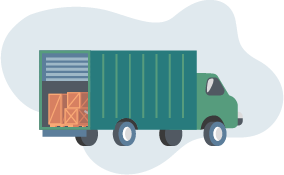
Ground Freight
Ground transportation, primarily trucks, is widely used for domestic freight shipping. It provides flexibility, accessibility to remote areas, and door-to-door delivery options. Ground transport is suitable for both small and large shipments, offering a balance between cost and speed.

Air Freight
Air transportation is known for its speed and efficiency, making it ideal for time-sensitive or high-value shipments. It offers global coverage and enables quick delivery, but it can be relatively expensive compared to other modes.
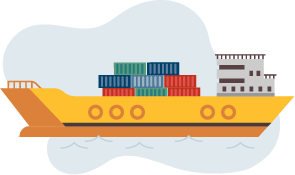
Ocean Freight
Ocean shipping is the most commonly used mode for international trade. It is cost-effective for large volumes of goods and offers extensive capacity for bulky or heavy cargo. However, it has longer transit times compared to air freight.
To learn more, check out our Freight Shipping Modes of Transport blog post.
Understanding basic freight shipping terms
Yes, there is a lot of lingo in the freight shipping world. There are a lot of different freight services, solutions, modes and processes. That’s why it’s important to understand the most important ones. Here’s a look:
- Less-than-truckload (LTL) shipping offers a cost-effective solution for businesses with smaller freight volumes that don't require the full capacity of a truck or container. This unique approach allows for the consolidation of multiple shipments from different customers, ensuring optimal load distribution and reducing empty truck movements.
- Full truckload (FTL) shipping is a freight transportation service in which a shipper reserves the exclusive use of an entire trailer or container for their goods. This type of shipping is ideal for businesses that need to transport large or heavy shipments that require the entire capacity of a truck or container.
- Specialty freight is cargo that requires unique handling, special equipment, or specific environmental conditions during transportation. This can include items such as hazardous materials, trade show items, pharmaceuticals, high-value goods, and perishable items.
- Expedited freight is often more expensive than other shipping methods and is ideal for customers who need their goods to arrive as quickly as possible. The cost of express freight will vary depending on the carrier, the shipping distance, and the weight and size of the package.
- Freight class is assigned to a shipment to determine its shipping cost. The density of a shipment is determined by its weight and volume. Stowability is determined by the shape and size of a shipment, and how easily it can be loaded onto a truck or container. Handling characteristics are determined by the fragility of a shipment and whether or not it requires special handling.
- NMFC (National Motor Freight Classification) codes are a system of standardized codes used to classify different types of freight. These codes are assigned by the National Motor Freight Traffic Association (NMFTA) and are used by carriers to determine the rates they will charge for shipping different types of freight.
- Bill of lading serves as a vital legal document that outlines the specific terms and conditions associated with a freight shipment. It represents a legally binding contract between the shipper and the carrier, acting as a receipt for the shipper and proof of delivery for the carrier. This document holds great importance as it not only serves as a record of the shipment but also includes crucial information pertaining to the goods being transported.
Want to learn more? Check out our guide to freight shipping terms you need to know.
How To Ship Freight: A Step-by-Step Guide
Whether you're a seasoned shipper or just starting out, freight shipping can be complex as heck! But understanding the process and following best practices can make all the difference in the world. The comprehensive guide below will provide you with a step-by-step approach to shipping freight, covering everything from preparing your freight shipment and selecting the right freight class to ensuring compliance with regulations. Woohoo!
Preparing your freight shipment
Before you can ship your freight, you need to properly prepare it to ensure that it arrives at its destination safely and in good condition. Here are the key steps involved in preparing your shipment:

1. Measure and weigh your shipment accurately.
This information is essential for determining the shipping cost and selecting the appropriate mode of transportation. Make sure to measure the length, width, and height of your shipment in inches, and weigh it in pounds. If your shipment is oversized or overweight, you may need to pay additional shipping charges.

2. Pack your shipment tightly to prevent shifting during transit.
Take the time to assess the fragility of your goods to determine the level of freight packaging protection needed. Loose items are more likely to be damaged, so make sure to pack your shipment tightly or make sure they are secured to the pallet with straps or shrink wrap to minimize movement. Use void fill materials such as bubble wrap or packing peanuts to fill any empty spaces if you are utilizing boxes. Also, if you are using packaging tape, be sure to seal it securely to prevent it from coming open during transit. Use a strong, wide tape that is specifically designed for shipping.

3. Label your package clearly with vital information.
Marking and labeling your freight communicates the proper methods of freight shipping and handling. Labels often communicate the hazards associated with the package, and markings ensure the shipment is handled so that spills, accidents and exposure are prevented. In addition to markings and labels, each freight shipment must be properly classified and contain the Bill of Lading (BOL). Be sure your labels are in English and displayed on all sides of freight, are unobscured by labels or attachments and located away from any other markings.
Freight shipping documentation
Documentation is a crucial aspect of shipping freight, ensuring the smooth and timely delivery of your goods. Several key freight documents are required for both domestic and/or international freight shipments, each serving a specific purpose. They include:
- Bill of lading (BOL). A document that serves as a receipt for the goods and a contract between the shipper and the carrier.
- Certificate of origin: A document that certifies the country of origin of the goods.
- Packing list: A detailed list of the items included in the shipment.
- Commercial invoice. A commercial invoice is a detailed document for international shipments that provides information about the goods being shipped, their value, and the parties involved in the transaction.
- Customs forms. Customs forms are required for all international shipments and provide detailed information about the goods being shipped, their value, and the purpose of the shipment. The specific customs forms required will vary depending on the country of origin and destination.
By providing accurate and complete documentation, you can make sure there is smooth and efficient movement of your freight shipment through the shipping process, minimizing delays and ensuring timely delivery!
Selecting the right freight class
Choosing the correct freight class for your LTL freight (not needed for FTL) is crucial for cost-effective and efficient shipping. It directly impacts the freight rate you'll pay. Freight classes are determined by several factors, including the commodity's density, weight, dimensions, special handling requirements, shipping distance, value of the goods, and any specific regulations or restrictions that apply. In particular, freight class is determined by four standard characteristics:
- Density
- Ease of handling
- Liability
- Stowability
Don’t worry! We dive deeper into freight class later in this guide. In the meantime, check out Everything You Need To Know About Freight Class.
Freight Class Impact On Pricing
In short, higher freight classes signify greater complexity and risk, leading to higher shipping costs. That means accurate classification is crucial. Misclassification can result in costly billing adjustments or fines (ouch!). Understanding freight class enables businesses to optimize packaging and select the most cost-effective shipping methods, ultimately impacting their bottom line.
Here are some tips for reducing the cost of freight shipping:
- Ship your freight during off-peak times.
- Negotiate volume discounts with carriers.
- Pack your freight efficiently to reduce the weight and dimensions of your shipment.
- Use a third-party logistics (3PL) provider to manage your shipping logistics.
By following these tips, you can reduce the cost of shipping freight and improve your bottom line (yay!).
HAZMAT compliance tips
HAZMAT can be a pain to ship! Before shipping hazardous materials, familiarize yourself with the Hazardous Materials Regulations (HMR) published by the Department of Transportation (DOT) and the International Air Transport Association (IATA). The HMR provides detailed information on the classification, packaging, marking, labeling and shipping of hazardous materials. In the meantime, here are a few HAZMAT shipping tips that will help:
- Obtain any necessary permits or licenses.
- Ensure your packaging meets all DOT and IATA regulations.
- Mark and label your packages correctly in accordance with DOT and IATA regulations.
- Train your employees in the proper way to handle and ship hazardous materials.
By following these simple compliance tips, you can help to ensure the safe and legal shipment of hazardous materials. Want to discover ways to optimize your logistics operations for smarter freight shipping? Check out 6 Steps To Move Your Freight Efficiently.
Types of Freight Shipping
Freight shipping is complex and there are a lot of moving parts (no pun intended). That’s why it’s important to familiarize yourself with the most common modes of freight shipping. Lucky for you, we have them here!
Less than truckload (LTL) shipping
In the world of freight shipping, there are many options available to businesses based on the size and volume of their shipments. Among these options, less than truckload (LTL) shipping stands out as a cost-effective and efficient solution for transporting goods that are too large for parcel shipping but not big enough to fill an entire truck.
LTL shipping operates on a principle of consolidation, combining multiple shipments headed for similar destinations. This strategic approach enables carriers to optimize their routes, minimizing empty space within their trucks and maximizing efficiency. By consolidating shipments, LTL carriers can significantly reduce transportation costs, a benefit that is ultimately passed on to their customers.
LTL freight benefits
LTL shipping offers several advantages over other shipping methods, making it a popular choice for businesses of all sizes. Those include:
- Cost-effectiveness — By consolidating shipments with other businesses, LTL carriers can reduce their costs and pass those savings on to their customers. LTL shipping rates are typically lower than truckload shipping rates, and they can also be lower than parcel shipping rates for large shipments.
- Speed — LTL carriers typically have a large network of trucks and drivers, which allows them to quickly and efficiently transport shipments. LTL shipments are often delivered within a few days, and they can even be delivered overnight for an additional fee.
- Reliability — LTL shipping is a reliable shipping option. LTL carriers have a proven track record of delivering shipments on time and in good condition. They also have a variety of security measures in place to protect shipments from theft and damage.
- Flexibility — LTL carriers can accommodate a variety of shipment sizes and weights. They can also ship to a variety of destinations, including rural areas. LTL shipping is also a good option for businesses that have special shipping requirements, such as temperature-controlled shipping or hazardous materials shipping.
Full truckload (FTL) freight shipping
Full truckload (FTL) shipping refers to the transportation of goods that occupy the entire space of a semi-truck or trailer. This mode of shipping is typically used for large or bulky items that require the exclusive use of a truck.
Overall, FTL shipping is a good option for businesses that need to ship large loads quickly, efficiently, and securely. While it may be more expensive than LTL shipping, the benefits of FTL shipping often outweigh the costs.
Full truckload shipping advantages
FTL shipping offers several advantages over other shipping methods, making it a popular choice for businesses of all sizes. Here are some of the key benefits of FTL shipping:
- Faster transit times: Because FTL shipments are not consolidated with other freight, they can be delivered more quickly. This is especially important for time-sensitive shipments or businesses that need to maintain a just-in-time inventory.
- Reduced risk of damage: When goods are shipped in a shared truck, they are more likely to be damaged due to shifting. With FTL shipping, goods are less likely to be damaged because they are the only freight in the truck.
- More security: FTL shipments are more secure than LTL shipments because they are not handled as often. This is important for businesses that are shipping valuable or sensitive goods.
- Easier tracking and monitoring: FTL shipments are easier to track and monitor than LTL shipments because they are not consolidated with other freight. This allows businesses to keep a close eye on their shipments and ensure that they are delivered on time and in good condition.
Comparing FTL with LTL freight
One of the key considerations when choosing between FTL and LTL shipping is cost. FTL shipping is often more cost-effective for large loads, while LTL shipping is a better option for smaller shipments. This is because LTL carriers can combine multiple shipments from different customers into a single truck, which reduces the cost per shipment.
To learn more, check out our infographic on the benefits of LTL vs FTL!
Specialty freight shipping services
From hazardous materials that demand meticulous handling to oversized loads that require exceptional planning, specialty freight services play a vital role in ensuring the safe and efficient movement of critical goods. Here we talk about the intricacies of these specialized services, exploring the types of freight that fall under this category.

Expedited
Freight
Faster-than-standard shipping services.
Prioritizes urgent deliveries with shortened transit times.
Utilizes direct routes and may involve dedicated vehicles.

Hazmat
Freight
Specialized transportation for hazardous materials.
Requires compliance with strict regulations for safety.
Involves trained professionals and specialized equipment.

White Glove Services
Premium service offering extra care and handling.
Includes inside delivery, setup, and removal of packaging.
Often used for high-value, fragile or sensitive shipments.

Tradeshow Shipping
Dedicated logistics for transporting and setting up tradeshow exhibits.
Includes services like timely delivery, setup and dismantling.
Often involves coordination with event schedules and venues.
LEARN MORE
Have a question about freight types?
As an industry-leading 3PL, Unishippers provides best-in-class shipping tools, technology and support to help you easily manage your freight shipping. Reach out to one of our experts today for a free consultation.
Less Than Truckload (LTL) Shipping
Sometimes less is more — and that is particularly the case with less-than-truckload (LTL) shipping, a popular option for businesses that need to ship smaller freight. It's a cost-effective and flexible way to get your goods from point A to point B, but there are some special considerations to keep in mind when using LTL shipping. Here, we'll discuss the pros and cons of LTL shipping so you can make the decision that is best for your business. Let’s go!
Cost-Effectiveness
LTL shipping can be a more cost-effective option compared to full truckload (FTL) shipping, particularly for smaller shipments. With LTL shipping, you only pay for the space your freight occupies in the truck, rather than paying for the entire truck. This can result in significant savings, especially if you are shipping smaller loads or if you have multiple shipments that can be consolidated into a single LTL load.
Flexibility
LTL carriers can accommodate freight of various sizes and weights, from small to large pallets. This makes LTL shipping a good option for businesses that need to ship a variety of goods.
Shipment size limitations
Standard LTL shipments are typically limited to a maximum length of 12 linear feet. The maximum weight limit for an LTL shipment is typically between 150 and 15,000 pounds. However, some carriers may accommodate larger shipments for an additional fee.
Longer delivery times
LTL carriers consolidate multiple shipments into a single load, which means that your shipment may have to wait at the carrier's terminal until there is enough freight to fill the truck. Additionally, LTL carriers often have longer routes than FTL carriers, as they may need to make multiple stops to pick up and deliver other shipments.
How to optimize LTL shipping operations
In today's fast-paced business environment, optimizing logistics operations is crucial for maintaining efficiency and competitiveness. Less-than-truckload (LTL) shipping, a cost-effective method of transporting goods, presents its own set of challenges that require strategic optimization. By implementing the strategies below, shippers can streamline their operations, reduce costs and elevate customer satisfaction.
LTL freight cost considerations
The cost of LTL shipping is determined by a variety of factors, including:
- The weight and dimensions of the shipment. The heavier and larger the shipment, the more it will cost to ship.
- The distance the shipment is traveling. The longer the distance, the more it will cost to ship.
- The type of freight. Some types of freight, such as hazardous materials, cost more to ship than others.
- The shipping method. LTL shipping is typically less expensive than truckload shipping, but it can be more expensive than parcel shipping.
- The carrier you choose. Different carriers have different rates, so it's important to compare rates before you book your shipment.
By following these tips, you can save money on your LTL shipping costs and get your shipments to their destinations on time and in good condition.
Technology use
Technology plays a crucial role in optimizing LTL shipping operations, providing shippers with innovative tools to enhance efficiency, reduce costs, and improve customer service. One essential tool is a transportation management system (TMS), which serves as a central platform for managing all aspects of LTL shipping. A TMS enables shippers to streamline processes, automate tasks, and gain real-time visibility into their supply chain.
Want to learn more about LTL freight?
Check out “LTL Shipping: Sometimes Less Really Is More Tip Sheet.”
Full Truckload (FTL) Shipping
When it comes to shipping large, indivisible, or time-sensitive freight, full truckload (FTL) shipping is the preferred choice. FTL shipping offers a host of advantages that cater to the unique demands of such shipments. From reduced handling and faster delivery to enhanced security, FTL shipping ensures that your goods reach their destination safely, securely and on time. Here, we will dive into the intricacies of FTL freight shipping, exploring the scenarios where it proves to be the optimal solution and uncovering the benefits that set it apart from other shipping methods. Here we go!
FTL equipment types
Full truckload shipping offers various equipment solutions tailored to different cargo needs:
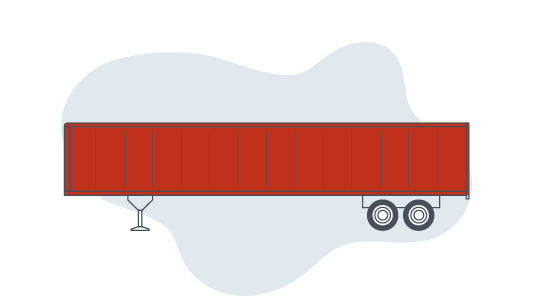
Dry Van
Standard enclosed trailers suitable for most dry goods, protecting against weather and theft.
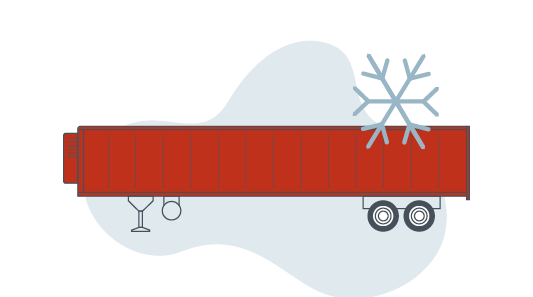
Refrigerated Trailer (Reefer)
Equipped with temperature control for perishable items like food and pharmaceuticals.
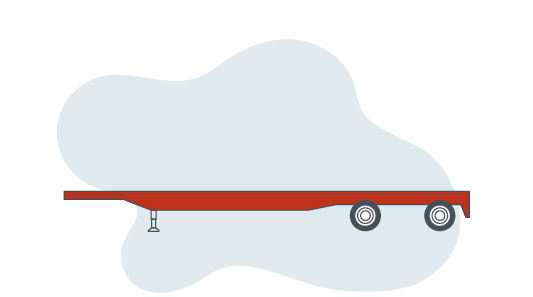
Flatbed Trailer
Ideal for oversized or irregularly shaped cargo, offering easy loading and unloading.
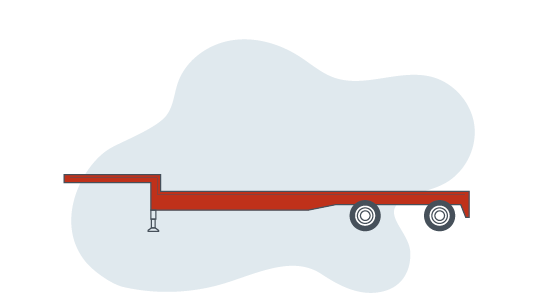
Step Deck Trailer
Similar to flatbeds but with a lower deck for taller freight, enhancing stability.
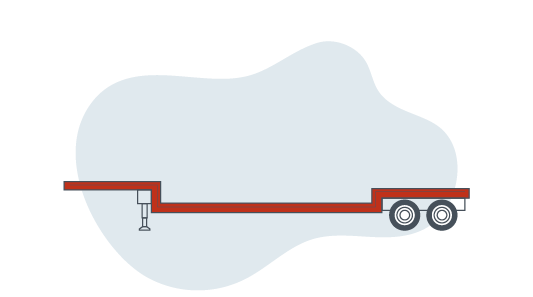
Double Drop Trailer
For extremely tall or bulky items, featuring two lower deck levels for added clearance.

Specialized Equipment
Includes tankers for liquids, curtain-side trailers for easy access, and intermodal containers for seamless rail-to-road transport.
Large shipments
When your shipment is too large to fit on a single pallet, full truckload (FTL) shipping is the best option. Additionally, if the weight of your shipment exceeds the weight limit for less-than-truckload (LTL) shipping, FTL shipping is the best choice. Finally, FTL freight is also the best option for oversized or oddly shaped shipments that cannot be accommodated by other shipping methods.
Reduced handling
Less handling is a key advantage of FTL shipping. This is because there are fewer touchpoints between the time the shipment is picked up and the time it is delivered. This reduces the risk of damage, the need for packaging and protection, and the likelihood of mishandling and loss. With FTL freight, the goods are loaded onto the truck at the origin and are not unloaded until they reach their destination. This eliminates the need for multiple transfers and reduces the likelihood of the goods being damaged or lost.
Faster delivery
Unlike LTL shipping methods that involve multiple touchpoints, FTL shipping dedicates an entire truck exclusively to your shipment. This eliminates the risk of delays caused by transfers between different vehicles or modes of transport.
Security
Full truckload shipping offers a number of security advantages over other shipping methods. For example, because the goods stay on the same truck from pickup to delivery, there is a reduced risk of theft. Additionally, the shipment can be sealed and locked, providing an extra layer of protection.
Maximizing efficiency in FTL freight operations
In the world of logistics, efficiency is paramount. Here we dive into the intricacies of maximizing efficiency in FTL operations, dissecting topics like route planning and strategic cargo loading. By optimizing these elements, businesses can minimize costs, reduce transit times, and enhance overall operational performance.
Importance of Correct Freight Classification
One of the most critical aspects of LTL freight shipping is freight classification. Assigning the incorrect freight class to shipments can result in expensive fees, delays, and potential damage while in transit. And you obviously don’t want that! Properly classifying your freight can decrease your shipping costs and yield more precise freight quotes.
Definitionally, freight class provides a standardized method to categorize LTL freight based on factors such as density, stowability, liability and handling. There are 18 different freight classes that assist carriers and shippers in identifying, comparing, and pricing their shipments effectively.
By understanding the importance of accurate freight classification, you can ensure smooth and cost-effective shipments, avoid unnecessary delays, and maintain compliance with industry regulations. Are you ready for (freight) class?
What is freight classification?
Freight class is one of the most important factors to consider when trying to reduce your overall shipping expenditure. By properly classifying your freight, you’ll be able to get more accurate quotes and avoid costly delays and reclassification fees. But freight classification can get complicated — especially for small and mid-sized businesses (SMBs) that are juggling multiple shipments and priorities. The good news is that we have created this comprehensive guide full of freight class tips that will help you speak the lingo and class your freight with confidence.
Freight class
Freight class is a standardized way of classifying less-than-truckload (LTL) freight shipments based on varying characteristics, including: density, stowability, liability and handling. A commodity’s freight class is assigned by the National Motor Freight Traffic Association (NMFTA), giving LTL freight carriers and shippers a simple way to compare and price it.
NMFC codes
Every type of product or commodity corresponds to a National Motor Freight Classification (NMFC). While freight class represents a finite number of broad commodity categories, NMFC codes represent more specific subcategories within freight classifications for further identification.
Factors that determine freight class
When preparing your LTL freight shipments, it’s important to understand the variables that could impact your freight class. Freight class is calculated based on several factors that fall under four main categories: density or commodity type, stowability, liability and handling. Let’s take a look at these four categories and what they mean for your freight classification.
Density or commodity type
Density is determined by the total weight in pounds divided by total cubic feet. In other words, the density represents the amount of space your freight will take up on a carrier relative to its weight. Freight with a lower density will typically correlate to a higher (and more expensive) freight class. In some cases, commodity types have predictable sizes and weight. These standardized commodity types will have pre-determined freight classes, allowing freight shippers to skip density calculations during shipment preparation.
Stowability
Most freight should be fairly easy to fit into the shipping container. However, some commodities are cumbersome, difficult to load or can’t be loaded with other items on the container for various reasons. Stowability comes down to this: if an item is difficult to fit in the truck, it will have a higher freight class, which in turn will result in a higher overall shipping cost. For example, things like wooden cabinets and chairs fall under a 300 freight class because they can be difficult to stow in freight trucks, while easily packaged items like nuts and bolts fall into NMFC class 50.
Liability
Freight that is at an increased risk of being damaged, stolen or causing damage to other freight within the vicinity has a higher liability. Combustible materials, for example, are at an increased risk of harming the surrounding environment, which will result in a higher freight class and cost per pound.
Handling
Freight goes through several checkpoints and distribution facilities on the path to its final destination. For this reason, items that require special handling and additional care — e.g., HAZMAT and sensitive electronics — may have a higher freight class.
How to determine your freight class
STEP 1:
Determine if the shipment is commodity - or density-based If you ship commodities that vary in size, or if the number of items in each shipment varies, your freight will likely be assigned a density-based classification. Commodity-based classifications, on the other hand, are given to commodity types that are fairly consistent in size and weight from shipment to shipment. Ceramic tiles, books and bottled drinks are common types of commodity-based classifications.
STEP 2: Calculate density
- Measure the length, width and height of your shipment. Keep in mind that this measurement includes pallets and packaging that surrounds the actual shipment. It’s always a good idea to round up to the next inch or so.
- Multiply the length, width and height that you took note of in step 1. This calculation gives you the total cubic inches of the shipment. To convert this number to cubic feet, divide by 1,728.
- Determine the weight of the shipment in pounds. Divide this number by the total cubic feet of the shipment. The result is the pounds per cubic foot, or density. If you are shipping multiple pieces, it will be easier to add the total weight of each piece before dividing by the total cubic feet.
STEP 3: Determine freight class
Working with a third-party logistics (3PL) company will grant you access to a transportation management system (TMS) with a built-in freight class calculator. 3PLs like Unishippers also provide consultation to help you with any questions you have along the way. Additionally, online resources like ClassIT.com can be helpful in determining your freight’s classification through simple search functionality. And if you’re working with commodity-based freight, the manufacturer should be able to queue you in on the freight class for their products. if you’re working with commodity-based freight, the manufacturer should be able to queue you in on the freight class for their products.
Freight class cost implications
Assigning the correct freight classification code to your shipments is not a mere formality; it has far-reaching implications for your business operations, compliance, and overall efficiency. Incorrect freight classification can lead to a cascade of costly consequences that can severely impact your bottom line and disrupt your supply chain, including:
- Financial penalties
- Delays in shipments
- Legal consequences
- Damage to reputation
Ready to learn more? Check out Everything You Need To Know To Properly Class Your Freight.
Additional LTL freight pricing considerations (aside from freight class!)
Pricing strategies for less than truckload (LTL) shipping are designed to balance cost-efficiency with service quality, catering to the specific needs of shipments that do not require a full truckload. Here are some key strategies:
- Distance-Based Pricing: Charges increase with the distance the cargo needs to travel. This strategy considers fuel costs, driver wages, and the wear and tear on transportation vehicles.
- Dimensional Pricing: Instead of just weight, this strategy takes into account the dimensions of the shipment. It is particularly useful for freight that is light but occupies a lot of space, ensuring costs reflect the space used in the truck.
- Minimum Charge: Most carriers have a minimum charge that covers the basic costs of transporting even small shipments. This ensures profitability regardless of the shipment size.
- Discounts and Negotiations: Carriers often offer discounts based on volume, frequency, or through negotiated terms with regular customers. This can significantly lower the cost for shippers who offer consistent business.
- Accessorials and Surcharges: Additional fees for services such as inside delivery, liftgate service, or residential delivery. These are typically added to the base rate depending on the specific needs of the shipment.
- Fuel Surcharges: An adjustable pricing strategy that fluctuates with the cost of fuel. This surcharge compensates for the variable fuel costs that can significantly impact the overall shipping expenses.
- Seasonal Pricing: Adjusting prices based on seasonal demand allows carriers to manage capacity effectively. During peak seasons, prices may increase due to higher demand for shipping services.
By employing these strategies, you can get competitive and fair pricing while ensuring that your operations remain sustainable and profitable.
LEARN MORE
Have a question about freight class?
As an industry-leading 3PL, Unishippers provides best-in-class shipping tools, technology and support to help you easily manage your freight shipping. Reach out to one of our experts today for a free consultation.
Reducing Freight Shipping Costs
Every small and midsized business (SMB) shipper has a budget they’re trying to stick to when it comes to their freight shipping operations. However, poor planning, organizational inefficiencies and a lack of experience can quickly cause freight shipping costs to spiral out of control.
In this section, we’ll cover some best practices for making the most of every freight shipping dollar so you can keep your budget (and your bottom line) in great shape.
Tips for cost-effective freight shipping
Keeping your freight shipping costs under control doesn’t have to be time-consuming or overly complex. Here are a few practical and proven tips for reducing your shipping costs across various freight operations.
Nail Your Negotiation Techniques
Like many other aspects of business, being an informed and confident negotiator can have a huge impact on ensuring that you get the best possible outcome. Best practices for freight shipping negotiations include:
Understanding Your Shipping Needs and Patterns
Begin by thoroughly analyzing your shipping data to understand your unique needs. Identify the volume, frequency and destinations of your shipments. This will provide you with a detailed profile that can be used in negotiations. Knowing your shipping patterns allows you to leverage bulk discounts and negotiate better rates based on volume commitments.
Building Strong Relationships with Carriers
A solid relationship with freight carriers is invaluable. Take the time to connect with your carriers beyond just transactional interactions. Engage them in discussions about how they can help meet your business goals, always pay invoices on time and communicate clearly and constantly. Carriers are more likely to offer competitive rates and their best service to businesses they trust and see as long-term partners.
Exploring Multiple Carrier Options
Don’t limit yourself to a single carrier. Engage with multiple carriers and compare their offerings. This not only gives you a better understanding of the market rates but also provides leverage in negotiations. If one carrier offers a better rate, you may be able to use that to secure an improved rate with another.
Leveraging Technology for Better Rates
Utilize freight management software and platforms that aggregate rates from various carriers. These transportation management systems (TMS) provide transparency and allow you to quickly identify the most cost-effective options. The best TMS platforms also offer tools to track shipments and manage logistics, adding further value to your operations.
Negotiating Beyond Just Price
While getting a lower rate is crucial, consider other factors that can add value to your shipping arrangements. Negotiate terms such as longer payment cycles, reduced accessorial charges or guaranteed delivery times at no extra cost. These aspects can significantly enhance your overall cost-effectiveness.
Securing Volume-Based Discounts
Many carriers are willing to offer better rates if you commit to a certain volume of shipments. Use your shipping data to forecast and commit to volume targets that are realistic yet substantial. This commitment can often unlock significant discounts.
Monitoring and Reviewing Contracts Regularly
Freight rates and market conditions change frequently. Ensure that your contracts include clauses for periodic reviews and adjustments. This allows you to renegotiate terms based on current market trends and your evolving business needs. Understanding the difference between spot rates and contract rates — and knowing the best time to use each — is also an invaluable asset.
Engaging a Third-Party Logistics Provider
Consider partnering with a third-party logistics (3PL) provider. 3PLs like Unishippers specialize in obtaining competitive rates for SMBs by leveraging their aggregated customer buying power and industry expertise. SMBs can also take advantage of a 3PL’s partnerships with reliable full truckload (FTL) and less-than-truckload (LTL) carriers to manage the carrier relationships for them. 3PLs can also provide customized solutions that evolve with your business, ensuring you always get the best value for your shipping dollar.
By implementing these negotiating strategies, you can effectively obtain freight shipping rates that not only reduce costs but also enhance your overall shipping efficiency and reliability. Remember, the key lies in understanding your needs, building strong relationships, and continuously seeking opportunities for improvement!
Focus on Freight Consolidation
Another highly effective method to control shipping costs is freight consolidation. This approach allows multiple shipments to be combined into a single, larger shipment, resulting in significant cost savings and operational efficiencies. This combined shipment is then transported to a common destination or distribution point.
Key benefits of freight consolidation include:
Reduced Shipping Costs
When SMBs combine their shipments into one larger shipment, they can take advantage of bulk shipping rates. This often translates into lower shipping costs per unit, making the entire process more economical.
Improved Efficiency
Freight consolidation streamlines the shipping process. Instead of managing multiple smaller shipments, SMBs can focus on a single consolidated shipment. This can lead to reduced administrative overhead, fewer invoices to process, and simplified tracking and scheduling.
Enhanced Reliability
Consolidated shipments are often handled by reputable freight forwarders or logistics companies, ensuring that your goods are in safe hands. These providers have the experience and resources to manage larger shipments efficiently, reducing the risk of delays and ensuring timely delivery.
Environmental Benefits
By consolidating shipments, SMBs can also contribute to environmental sustainability. Fewer trips mean reduced fuel consumption and lower carbon emissions. This not only benefits the environment but also enhances your reputation as a responsible and eco-friendly business.
As with sharpening your negotiating skills, freight consolidation is most effectively done when you partner with a 3PL like Unishippers. Our decades of experience assisting SMBs like yours will ensure you quickly become great at consolidating freight!
The importance of accurate freight classification in cost reduction
No discussion of controlling freight costs is complete without covering the paramount importance of correct classification. By taking the time to accurately classify your freight on every shipment, you can reduce delays and additional costs incurred by carrier reclassification.
Common Freight Classification Mistakes
Here are some of the most common freight classification errors and how you can avoid them.
Inaccurate Weight and Dimensions
One of the most frequent mistakes shippers make is providing incorrect weight and dimensions for their freight. Precise measurements are essential for determining the correct freight class, which directly impacts shipping costs. Underestimating or overestimating these values can result in reclassification fees, delays, and even fines. To avoid this, invest in reliable weighing and measuring equipment and ensure your team members are trained to use them correctly.
Misidentifying Freight Class
Freight class is determined based on various factors, including density, stowability, handling and liability. Misidentifying the appropriate class can lead to significant cost discrepancies. For instance, deliberately or accidentally classifying a lightweight but bulky item with a low-density class can result in higher shipping charges. Taking the guesswork out of classification is much easier when you consult with a 3PL like Unishippers, who can help ensure you are accurately classifying your freight and can also provide expert resources.
Overlooking Special Handling Requirements
Certain items require special handling due to their size, shape, fragility or hazardous nature. Failing to account for these requirements can lead to damage, additional fees and non-compliance with shipping regulations. Always review the specific needs of your freight and communicate them clearly to your logistics provider. Providing detailed information upfront ensures that your freight is handled appropriately from start to finish.
Neglecting to Update Freight Descriptions
Business operations and product lines evolve, and so should your freight descriptions. Using outdated information can lead to misclassification and other logistical issues. Regularly review and update your product descriptions to reflect any changes in materials, packaging, or dimensions. This practice helps maintain accurate classifications and avoids potential disruptions in your supply chain.
Ignoring Carrier-specific Rules
Different carriers may have unique rules and classifications for certain types of freight. Ignoring these can result in unexpected charges and delays. Building a good relationship with your preferred carriers can also facilitate smoother operations and better compliance.
Being an informed and savvy shipper is the best way to keep your freight costs under control and maximize your shipping budget. Small considerations can lead to big savings! Want to learn more about saving money on freight shipping? Check out our guide for Tips on Getting the Best Freight Shipping Rates.
Factors Affecting Freight Quotes
No business wants to overpay for their freight shipping. By obtaining accurate quotes on every shipment, you can ensure you’re getting fair pricing and also minimize unexpected expenses.
Key Factors for an Accurate Freight Quote
When it comes to obtaining an accurate freight quote, several key factors come into play. As an SMB, having a solid understanding of these elements can help you manage costs effectively and streamline your shipping processes.

Weight
Weight is a fundamental factor in determining freight costs. Heavier shipments require more fuel and resources to transport, leading to higher charges. Accurate weight measurements ensure you're billed correctly and avoid any unexpected fees.

Delivery Speed
The sooner your freight needs to be delivered, the higher your rate will be. Additionally, peak delivery times will impact your rate. If you can be flexible about delivery speed and optimize routes when planning your deliveries, you may be able to significantly reduce your costs.

Accessorial Fees
These are additional services that incur extra costs and are typically added to your bill after shipping is complete. Common accessorial fees include residential pickup/delivery, fuel surcharges, limited access locations, inside delivery, required appointments, liftgate service and guaranteed service.

Dimensions and Density
Larger, bulkier items take up more space in transport vehicles, which can limit the number of shipments a carrier can handle at once. Efficiently packing your goods to minimize volume can help reduce costs. Accurately stating the dimensions and density of your shipment are also crucial.

Distance
Distance is another critical component. The farther your goods need to travel, the higher the transportation costs. This includes not only the physical distance but also potential complexities such as crossing international borders, which can incur additional fees and regulations.

Type of Goods
The nature of the goods being transported affects the freight quote as well. Fragile, hazardous or perishable items require special handling and packaging, which can increase the cost. Clearly specifying the type of goods ensures the freight carrier can provide the appropriate resources and services.

Seasonal Demand
Finally, seasonal demand can influence freight costs. Peak seasons, such as holidays or harvest times, often see a spike in shipping activity, leading to higher rates due to increased demand. Planning your shipments around these peak times can help you secure better rates.
By considering these factors during the quote process, you can obtain a more accurate freight quote that reflects your shipping needs.
How to compare and analyze freight quotes
A smart shipper not only knows how to obtain the most accurate freight quote possible, but is also savvy enough to compare multiple quotes to ensure the best deal possible.
Here are some key steps and considerations when comparing freight quotes that will help you decide the right choice for your shipment and budget.
Comparison Techniques
Start by gathering quotes from several carriers to establish a baseline for comparison. Look beyond the bottom line; scrutinize the details of each quote. Factors like delivery times, insurance, tracking capabilities and additional services should all play a role in your decision. Using online comparison tools or working with a freight broker can simplify this process, providing an easy way to parse different offers side-by-side. Using a 3PL like Unishippers is invaluable here, as you can utilize their transportation management system (TMS) to compare quotes from multiple reputable carriers at the same time.
Evaluating Carriers
Not all carriers are created equal. When evaluating potential partners, consider their reputation, reliability and customer service. Research reviews and testimonials to gauge past performance and client satisfaction. It's also worth checking if they have experience handling the type of goods you need transported. A carrier specializing in delicate or perishable items, for instance, will likely offer better service for those specific needs.
Cost vs. Service Analysis
Price is an important factor, but it shouldn't be the only consideration. Conduct a cost vs. service analysis to weigh the benefits of each quote. Sometimes, a slightly higher price may provide superior service, faster delivery or additional benefits like enhanced tracking and support. Balancing cost with service quality is key to ensuring you get the best value for your money.
By diligently comparing freight quotes based on these criteria, you will be better positioned to select a carrier that offers the ideal blend of cost efficiency and reliable service.
Freight Insurance: Protecting Your Cargo
When it comes to shipping goods, protecting your investment is vital. Freight insurance offers peace of mind by covering potential losses or damages during transit. To make an informed decision, it's essential to understand the different types of freight insurance available and what they cover.
Here's a closer look at the key types of freight insurance and how they can benefit your shipping operations and your bottom line.
All-risk insurance
All-risk insurance is the most comprehensive coverage available for freight shipments. It covers a wide range of potential risks, including damage, theft and loss, except for those specifically excluded in the policy. This type of insurance is ideal for shippers who want maximum protection for their cargo. Whether your freight is transported by air, land or sea, all-risk insurance ensures that you are financially safeguarded against unforeseen events. Typical exclusions might include damage due to improper packaging or inherent vice (an item's natural tendency to deteriorate).
Named perils insurance
Named perils insurance, also known as specified perils insurance, provides coverage for specific risks explicitly listed in the policy. Unlike all-risk insurance, this type of coverage only protects against the perils named in the policy, such as fire, lightning, explosion or collision. While it offers less comprehensive protection, named perils insurance can be a cost-effective solution for shippers who are primarily concerned about certain types of risks. It is crucial to thoroughly review the policy to understand which perils are covered and ensure they align with your specific shipping needs.
Liability coverage vs. freight insurance
Liability coverage protects the carrier rather than the shipper. Carrier liability limits represent the maximum amount of liability that a freight carrier will accept for any given commodity if it can be demonstrated that they are responsible for its loss or damage.
A key thing to note is that a liability limit isn’t guaranteed coverage of your shipment in the event of damage or loss. Additionally, it’s also not a guarantee that the carrier will pay any certain amount on a claim. Each carrier has its own specific liability limits that they will cover, but one thing that all liability limits have in common is that they are easily surpassed by common shipping damages or losses.
Most importantly, freight carrier’s limits of liability are not insurance. If your shipments are high in value, perishable, time-sensitive, or consist of items such as heavy machinery or used goods, we strongly recommend that you insure them.
Why to choose shipping insurance
For pennies on your shipping dollar, insurance can minimize financial loss and other risks. Some of the top benefits of freight insurance include:
Full shipment value repayment
Flexible coverage
Dedicated customer support
Disaster and theft protection
Faster and smoother claims
Easily added coverage
Protection and peace of mind for you and your valuable customers is possible when you choose shipping insurance. This small investment can pay large dividends!
Freight claim process and documentation
Despite carriers’ best efforts, occasionally it may become necessary to file an insurance claim due to loss, damage or other issues. Navigating the complexities of freight claims doesn’t have to be overwhelming. With clear understanding, organized documentation, and timely actions, you can minimize hassle and maximize your chances of success.
Understand the Claim Filing Process
Before filing a claim, it’s crucial to understand the procedures and requirements. Each insurance provider may have slight variations in their process, so always refer to your policy details. Generally, the steps are:
- Report the Damage or Loss. Notate the condition of your shipment upon arrival. Notify your carrier as soon as you discover the damage or loss. Timeliness is essential, as delays can complicate or invalidate your claim.
- Document the Issue. Take detailed photographs of the damaged goods, packaging, and any other relevant aspects. Ensure you have a written statement from the recipient acknowledging the damage or loss.
- Prepare Your Documentation. Gather all necessary documents required by your carrier for the claim processing (outlined below).
- Submit the claim form. Fill out the claim form accurately and completely and attach all documentation necessary to support your claim.
- Follow Up. Keep track of your claim status by regularly following up with your carrier. Respond promptly to any requests for additional information.
Required Documentation
Having the proper documentation is key to a successful claim. Typically, you will need the following:
- Bill of Lading. Proves the shipment and details the terms and conditions of carriage.
- Commercial Invoice. Lists the goods shipped and their value.
- Proof of Delivery. Confirms the receipt of goods and notes any discrepancies or damages upon delivery.
- Inspection Report. If an inspection was conducted, include the detailed report.
- Photographic Evidence. Clear images of the damaged goods, packaging, and any relevant areas.
- Claim Form. The form provided by your carrier or insurer, completed with all necessary details.
- Correspondence. Any communication with the carrier or insurer regarding the damage or loss.
Tips for a Smooth Claim Process
You can greatly strengthen your claims case and improve your chances of a quicker resolution by taking just a little extra effort. To ensure your claim is processed efficiently:
- Be proactive by reporting any issues immediately and keeping thorough records of all communications.
- Provide clear, accurate, and comprehensive documentation to support your claim.
- Familiarize yourself with your policy details and the claim process.
- Regularly follow up with your carrier and respond promptly to any requests for additional information.
LEARN MORE
Have a question about freight shipping insurance?
As an industry-leading 3PL, Unishippers provides best-in-class shipping tools, technology and support to help you easily manage your freight shipping. Reach out to one of our experts today for a free consultation.
Working With Carrier Partners
For every freight shipping need, there’s a carrier out there. But are all carriers basically the same? How do you know which ones are more reliable or better suited for your shipping needs?
In this section, we’ll help guide you through the best ways to select the right carrier for your company’s specific shipping requirements and ensure you have the best possible experience every time you ship. And don’t forget: you can always rely on a 3PL partner like Unishippers to assist you with navigating carrier selection and all other aspects of your shipping.
How to choose the right carrier for your freight needs
Selecting the right freight carrier is a crucial decision that can significantly impact your supply chain efficiency and bottom line, and it’s essential to choose a carrier that aligns with your specific requirements.
Based on what matters most to you, there are many factors you can use to determine a given carrier’s suitability. Key attributes to consider include:
Pricing
Cost is one of the most common concerns when choosing a freight carrier — and for good reason! When comparing carriers, make sure to not only review your initial quotes, but also the carriers’ policies for accessorial fees (charges for additional services not included in your standard shipping rate) — these fees vary between carriers, and can add up quickly!
Coverage Area
Depending how far your freight needs to travel, you’ll have to decide between a national or regional carrier. While some of the top carrier names offer national delivery, many smaller carriers can only provide regional pickup and delivery services. By understanding carrier coverage areas, you can make sure to choose a carrier that meets your specific location needs.
Transit Time
It’s important to consider how quickly you need your freight to get to its final destination. Some carriers may be able to deliver your freight faster than others, but it’s important to note that the faster your freight needs to be delivered, the higher your rate will be.
Range of Services
Depending what type of products you ship, you may have certain service requirements that need to be met by the carrier. Additional services may include things like hazmat shipping or sealed divider service. By understanding the services you’ll need — and which services each carrier offers — you can ensure you have everything covered before you ship.
Communication and Reliability
Even if a carrier offers low freight rates, it means nothing if your shipments are consistently delayed. To keep your business running smoothly, you need a reliable carrier to deliver your freight on time — and keep you updated on your shipment’s status in transit.
Building long-term partnerships with carriers
Once you’ve determined the ideal carrier(s) you want to work with, establishing a strong working partnership should be a priority. Cultivating lasting relationships with your chosen freight carriers will improve your shipping operational efficiency immeasurably. These partnerships create a symbiotic relationship where both parties benefit from mutual growth and success.
Keys to Carrier Relationship Management
Effective relationship management is the backbone of any successful partnership. Open and constant communication, mutual respect and regular performance reviews are key elements that keep the relationship healthy. By understanding each other's strengths and weaknesses, both parties can collaborate to improve service quality and address any operational challenges.
Here are the top ten ways you can ensure that you are a preferred shipper for your favorite carriers:
- Always treat the relationship like it’s a partnership
- Pay your bills and fees on time, every time
- Avoid making last-minute changes to shipments as much as possible
- Communicate often and effectively
- Utilize data to make your carrier’s job easier
- Avoid dwell time (driver waiting at the pickup point) by having everything ready to go on time
- Create driver-friendly spaces like break areas, access to your restrooms, etc.
- Properly package and palletize your shipments
- Be patient if the carrier experiences delays
- Partner with a 3PL like Unishippers for extra help

Technology in Freight Shipping
The savviest shippers know that incorporating technology into their shipping activities is not only simple and simplifying, but absolutely game-changing. Relying on the right technological tools is a force multiplier that allows you optimize every aspect of your shipping operations, saving your team’s time and energy — and your money!
Overview of freight TMS
When it comes to crucial and effective shipping technologies, nothing really compares to the power of transportation management systems (TMS) and their accompanying capabilities.
What is a TMS, exactly? It’s a comprehensive software solution for managing every aspect of freight shipments, from quotes to delivery and beyond. It removes the need for disparate spreadsheets, manual record-keeping and individual freight software platforms by consolidating them into an always-available, all-in-one system.
Benefits of integrating technology in freight operations
A well-designed TMS can add significant value to your business. In this section, we’ll go through some of the top benefits your business can enjoy from the implementation of a quality TMS.
Efficiency Gains
Implementing a TMS streamlines your shipping operations by automating and optimizing complex logistical tasks. This leads to significant time savings, enabling your team to focus on strategic activities rather than getting bogged down in administrative chores. By saving address books, commodities and other account preferences, you can speed up shipment creation with minimal errors.
By automating processes like route planning, carrier selection and load optimization, a TMS ensures that shipments are handled efficiently and with minimal errors In addition, having a TMS handle your freight and parcel operations gives you the simplicity of managing all your shipping through just one tool.
Cost Reductions
As mentioned, a TMS can substantially cut shipping costs by allowing you to quickly compare quotes from many carriers. Additionally, a TMS provides real-time data on shipping rates and carrier performance, allowing you to make informed decisions that further drive cost savings.
Enhanced Tracking Capabilities
One of the standout features of a modern TMS is its advanced tracking capabilities. Real-time visibility into shipment status means you can monitor your freight at every stage of the delivery process. This transparency helps you quickly address any issues that arise, ensuring timely deliveries and maintaining high customer satisfaction levels. This level of peace of mind is incredible!
Improved Customer Service
Customer satisfaction is vital to the survival of any business, and a TMS enhances your ability to meet and exceed customer expectations. By providing accurate delivery estimates and real-time shipment updates, a TMS keeps your customers informed and engaged. The ability to quickly resolve shipping-related issues and offer reliable service strengthens your customer loyalty and trust.
Increased Shipment Visibility
Incorporating a TMS into your operations also opens up a wealth of reporting and analytics opportunities. Access to detailed shipping data allows you to identify trends, inefficiencies and areas for improvement. By leveraging this data, you can make data-driven decisions that enhance your logistics strategies and overall business performance.
A Top-Tier TMS
Our proprietary platform, myUnishippers™, is the industry-leading freight TMS that is built just for SMBs. It provides our customers with the technology and solutions they need to transform their freight shipping. Try a myUnishippers demo today!
Want to learn more about shipping technology? Check out our Understanding Freight Shipping Software: A Comprehensive Guide.
Freight Resources and Support
Knowledge isn’t just powerful, it’s transformative! We know freight shipping is a vast topic with a huge effect on your bottom line. That’s why we created a comprehensive repository of resources covering every possible aspect of freight shipping. Easily searchable and user-friendly, it can serve as your go-to guide for all things freight related. Here are some hand-selected resources to get you started!
Unishippers' Guide to Understanding LTL Freight Classification
Check out Unishippers’ simple 3-step guide to classifying your LTL freight.
Is the cheapest freight shipping quote always best?
When it comes to freight shipping, we know small and mid-sized businesses (SMBs) are always searching for the best freight…
Your Guide To Freight Shipping Fees
Your shipping rate is affected by variables such class and capacity, but did you know that your freight shipping is also subject to accessorial fees?
Freight Shipping FAQs
We know you have lots of questions about freight shipping. We’ve got answers! In this section, we’ll cover some of the most commonly asked questions we receive about freight shipping services.
Shipping across borders and oceans can be lucrative, but also complicated and stressful. This is where leveraging an experience 3PL like Unishippers is a life-saver. From the initial quote and doc prep all the way through tracking and confirmation, we offer everything you need to manage your international freight shipments.
Yes, with some caveats. Any type of freight that is not secured by a pallet is called non-palletized and is generally shipped using the same methods as palletized freight. Labor costs for non-palletized freight are usually higher, since the goods need to be loaded and unloaded manually. More fragile shipments are not suitable for non-palletized shipping. Also, as a general rule, loose freight that weighs more than 150 pounds should be palletized.
No! When you purchase shipping insurance for your freight, your shipment is covered across our entire carrier network, regardless of the carrier you choose.
Yes, in certain cases. If not handled properly, hazardous materials (hazmat) shipping can be dangerous and illegal. Materials considered to be hazmat include (but aren’t limited to) items that are explosive, acids, compressed gases, toxic, flammable, radioactive or corrosive.
Unishippers has decades of experience in hazmat shipping. By getting a quick, complimentary consultation from us, you can leverage our network of certified hazmat shippers to minimize the risk and maximize the value of your hazmat shipments.
FOB is part of a set of internationally recognized export rules called Incoterms. FOB indicates when liability and ownership of the shipped goods are transferred from the seller to the buyer.
There are two types of FOB shipments. When the FOB shipping point agreement option is used, the seller assumes transport costs and fees until the goods reach the point of origin. For FOB destination agreements, the seller is responsible for costs and fees until the goods reach their destination, excluding duties, customs, etc.
Unishippers: The Answer to All Your Shipping Questions
As there’s no way we could cover every possible freight shipping-related question in this section, we encourage you to contact the Unishippers team for the answers to anything not covered here and a complimentary shipping assessment. After serving as the trusted shipping advisor for tens of thousands of small and midsized businesses (SMBs) for over three decades, we’ve seen it all, shipped it all and we’re ready to be your dedicated shipping partner!
Table of contents
- What is freight shipping?
- How to Ship Freight: A Step-by-Step Guide
- Types of Freight Shipping
- Less Than Truckload (LTL) Shipping
- Full Truckload (FTL) Shipping
- Importance of Correct Freight Classification
- Reducing Freight Shipping Costs
- Factors Affecting Freight Quotes
- Freight Insurance: Protecting Your Cargo
- Working With Carrier Partners
- Technology in Freight Shipping
- Freight Resources and Support
- Freight Shipping FAQs
- Request a Free Consultation


